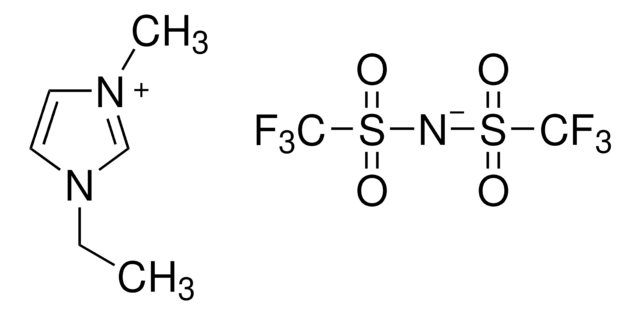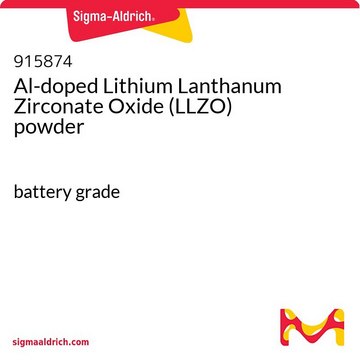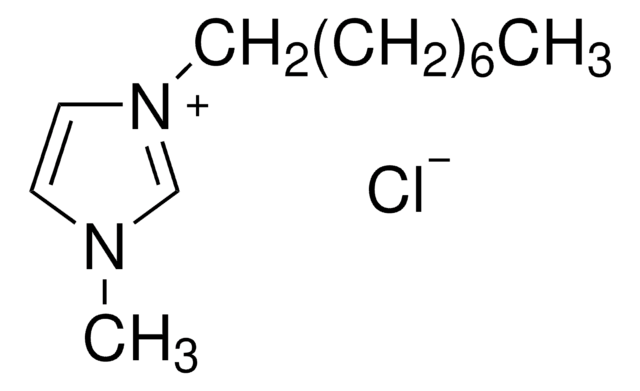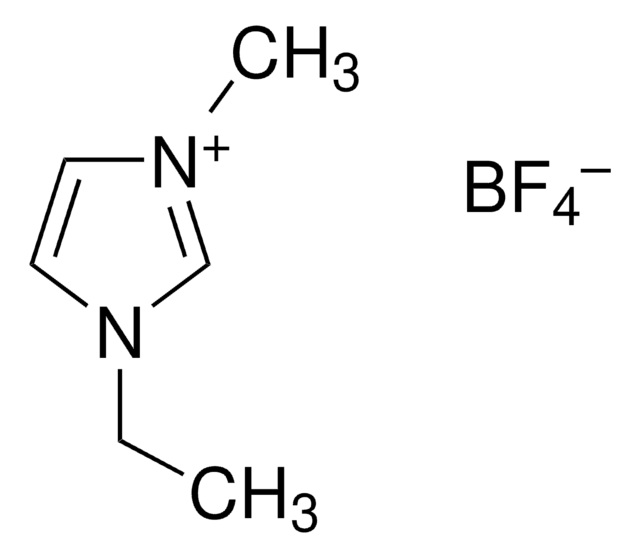Wichtige Dokumente
900806
1-Methyl-1-propylpiperidinium bis(trifluoromethylsulfonyl)imide
≥99%, H2O ≤500 ppm
Synonym(e):
1-Propyl-1-methylpiperidinium bis(trifluoromethanesulfonyl)imide, N-Methyl-N-propylpiperidinium bis(trifluoromethanesulfonyl)amide, PP 13TFSA, PP 13TFSI
About This Item
Empfohlene Produkte
Qualitätsniveau
Assay
≥99%
Form
liquid
Zusammensetzung
H2O, ≤500 ppm
Verunreinigungen
≤500 ppm H2O
mp (Schmelzpunkt)
12 °C
Dichte
1.412 g/cm3
Anwendung(en)
battery manufacturing
Allgemeine Beschreibung
Anwendung
Ähnliches Produkt
Lagerklassenschlüssel
10 - Combustible liquids
WGK
WGK 3
Flammpunkt (°F)
Not applicable
Flammpunkt (°C)
Not applicable
Hier finden Sie alle aktuellen Versionen:
Analysenzertifikate (COA)
Die passende Version wird nicht angezeigt?
Wenn Sie eine bestimmte Version benötigen, können Sie anhand der Lot- oder Chargennummer nach einem spezifischen Zertifikat suchen.
Besitzen Sie dieses Produkt bereits?
In der Dokumentenbibliothek finden Sie die Dokumentation zu den Produkten, die Sie kürzlich erworben haben.
Kunden haben sich ebenfalls angesehen
Artikel
Dr. Sun reviews the recent advances in solid-state rechargeable batteries and cover the fundamentals of solid electrolytes in solid-state batteries, the theory of ion conduction, and the structures and electrochemical processes of solid-state Li batteries.
Here, we present a short review of ionic liquid electrolytes used in state-of-the-art rechargeable batteries including high performance and low-cost aluminum batteries, non-flammable Li-based batteries, and high-cycling and stable dual-graphite batteries. We also outline the key issues explored so as to identify the future direction of IL development.
Unser Team von Wissenschaftlern verfügt über Erfahrung in allen Forschungsbereichen einschließlich Life Science, Materialwissenschaften, chemischer Synthese, Chromatographie, Analytik und vielen mehr..
Setzen Sie sich mit dem technischen Dienst in Verbindung.








